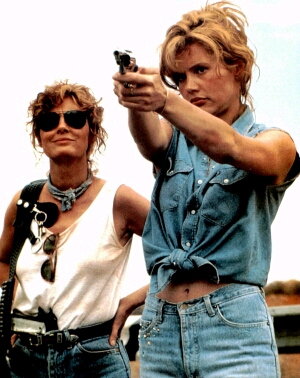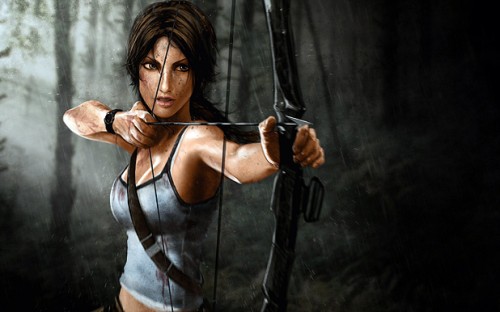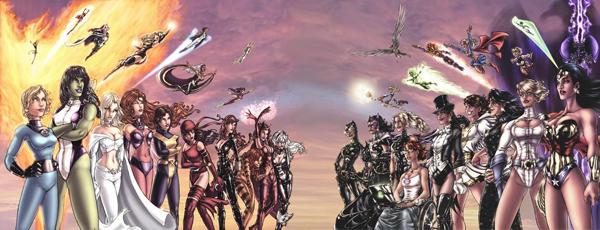
Written by Amanda Rodriguez.
We all know that male superheroes get reboots for their (often shitty) movies over and over and over again. There are an ever-increasing number of Batman, Superman, and Hulk movies, not to mention a growing franchise of Iron Man, Captain America and Thor flicks. With this mentality of quantity over quality, there’s no excuse for denying reboots to some of my favorite female superheroines and their considerably fewer films. Some of the movies that made my top 10 list admittedly sucked, and their heroines deserve a second chance to shine on the big screen. Some of the movies, however, were, are and ever shall be totally awesome, and I just want a do-over to enhance the awesome.
1. Buffy the Vampire Slayer
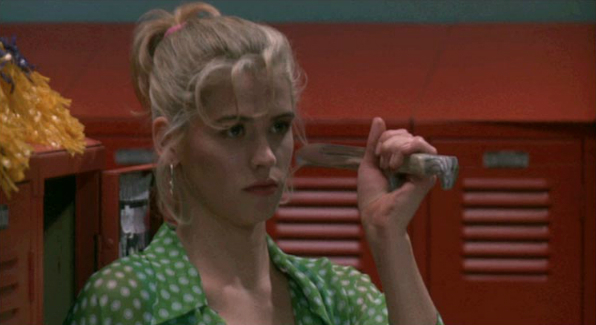
When the film Buffy the Vampire Slayer came out in 1992, I loved it. At the tender age of 10, I was already a huge movie nerd, so I was delighted to see all those celebrity cameos (Kristy Swanson, Donald Sutherland, Pee-Wee Herman/Paul Reubens, Rutger Hauer, Luke Perry, David Arquette, and I still associate the Academy Award-winning Hilary Swank with her bit part in this flick as an annoying, backstabbing valley girl). I loved the cheesiness and the unexpected badassness of its cheerleading heroine, Buffy. The movie, though, doesn’t hold a candle to the quality, thematic breadth, character depth, epic scope and feminism of the subsequent TV show Buffy the Vampire Slayer that aired 1997-2003.
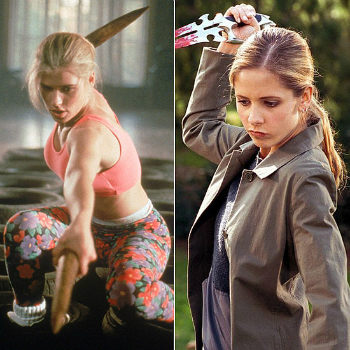
Buffy has become one of the most iconic superheroines in our pop culture history. She has prophetic dreams and preternatural strength, agility, speed and healing along with the mantle of a dark destiny as “the chosen one” who must give her life in service to protecting the world from unseen demonic threats. A reboot could draw more from the material of the TV show, focusing on friendship, community and sisterhood while keeping all the action and humor that draw in crowds. Combine that with a die-hard cult fanbase, and a BtVS reboot can’t lose.
2. Supergirl

The 1984 movie Supergirl, starring a young, fresh-faced Helen Slater, was another childhood favorite of mine. Even now 30 years after its release, my nostalgia-tinted view doesn’t allow me to see Supergirl as anything other than a formative superheroine movie about a woman who chooses her duty, her family, and her planet over romantic love. Though Supergirl (aka Kara) has the exact same powers as her cousin Superman (superhuman strength, flight, x-ray and heat vision, freezing breath, invulnerability and an aversion to kryptonite), Kara was so much more exciting than the Man of Steel from whom her comic incarnation was spawned.

Supergirl, like Superman, is an uncomplicated role model for young girls and boys. She is always brave, good, and righteous, and her moral code guides her and always triumphs in the end. I say if Superman got a series reboot, then fair is fair and Supergirl should get one, too.
3. Red Sonja

My love of Red Sonja is downright legendary. She’s a barbarian babe and the greatest sword-wielder who ever lived. The film is full of grand, beautifully choreographed fight sequences, dramatic accents and lines that I’ll probably utter on my deathbed (“You can’t kill it; it’s a machine!“). Sonja faces off against Queen Gedren, a lesbian super villainess played by the mistress of the sword and sandal genre: Sandahl Bergman (more on her later). As a young child, I adored watching these strong, independent women face off in single combat–women who would decide the fate of the world.
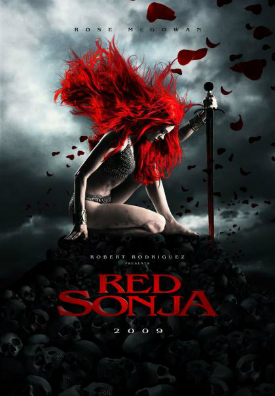
Both based on comics, Red Sonja is part of the Conan universe. If Conan got his very own craptastic reboot of Conan the Barbarian (starring Jason Momoa of Khal Drogo fame), then it’s high time Red Sonja got hers, too. Hell, they should even make Sonja a lesbian since she’s none to fond of the gentlemen folk and just look at that Kentucky waterfall action she’s rocking. Wow, the idea of an epic lesbian swordswoman is really blowing my mind. That. We need that S.T.A.T.
4. Aeon Flux
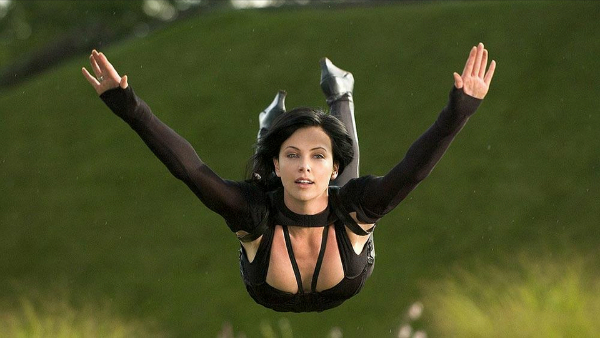
The 2005 film Aeon Flux was generally considered a flop. Based on the animated series Aeon Flux that appeared on MTV’s Liquid Television in the 90s, the film was so loosely based on its source material that it disappointed fans and failed to engage newcomers. Animated series creator, Peter Chung, called the film version “a travesty” that made him feel “helpless, humiliated, and sad…Ms. Flux does not actually appear in the movie.”
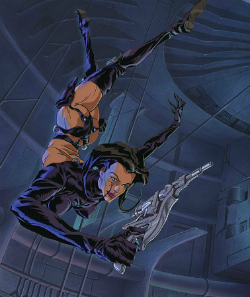
Frankly, the movie just wasn’t weird enough. The cartoon is populated by bizarre bodies that bordered on the grotesque, trippy visuals, nonlinear narratives and complex political and philosophical musings. The animated Aeon Flux was really cool, iconic, unexpected and unpredictable. Hollywood could use an injection of surreal, nonconformist cinema. Aeon should get a second shot, one that stays truer to its eccentric cartoon.
5. Lara Croft: Tomb Raider
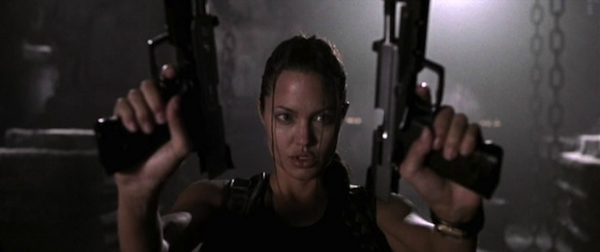
Lara Croft: Tomb Raider and its sequel Lara Croft Tomb Raider: Cradle of Life are based on the wildly popular video game series Tomb Raider. A female Indiana Jones-type adventuring archeologist, Lara Croft is an ideal heroine: brilliant, capable, inventive and athletic. Croft is proof that female-centric video games that don’t sexually exploit their heroines can be extremely successful and lucrative.
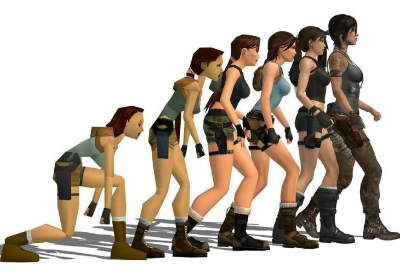
The movie, however, had a long, convoluted, boring storyline. With a Bond-style episodic approach, the film left me feeling like I hadn’t gotten to know any of the characters in a meaningful way, and even the much anticipated action sequences dragged on and on and on. I don’t want to say good-bye, though, to such a magnetic female character who draws both male and female fans. With a quality script and a judicious editor, a Lara Croft reboot could be amazing, encouraging little girls to want to be Lara Croft (not Indiana Jones) when they grow up.
6. She
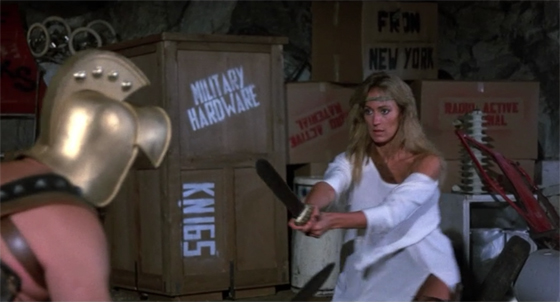
1982’s She is a cult classic full of the most random-ass shit you can imagine. I was obsessed with it as a kid. Starring the arresting Sandahl Bergman, of Red Sonja and Conan the Barbarian fame, the film is probably very loosely based on the H. Rider Haggard novel She. The movie takes place in a bizarre post-apocalyptic world wherein She is a ruler of a matriarchal society. Worshiped as a goddess, She protects her people and accepts male (sexual) sacrifices. She is a warrior who goes on a journey to rescue a young woman, encountering werewolves, exploding mimes, a giant in a tutu and some green dudes who seem like they have some kind of leprosy.
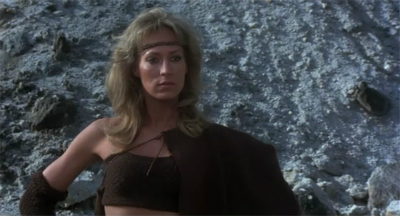
Keeping the darkness and the zaniness of the original film, a reboot about a powerful, complicated, not always righteous female ruler set in a dystopian, magical world would be an exciting challenge. If I had my way, Bergman would reprise her role as She or at least have a cameo in the reboot.
7. Elektra
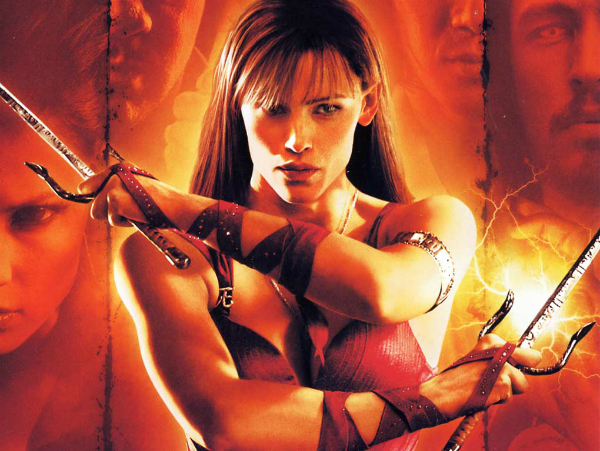
Though the character Elektra has a long comic book history, she first appeared as a love interest in 2003’s Daredevil. Though she died in the end of that massive pile of festering turds, she was later resurrected for her own spin-off film, Elektra, which was a box office flop. Truly, I was impressed with actress Jennifer Garner who performed the role of Elektra, mainly due to how excellent she was with the physicality of the role. She trained hard for the part and looked graceful, strong and natural in her martial arts performance and sai use, which is a hell of a lot more than I can say for fat-headed Ben Affleck’s awkward, cringe-worthy fighting “skills.”
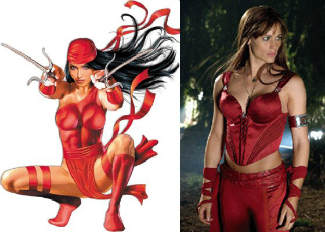
The plotline of the Elektra film was silly with a throwaway story, but I appreciate that our heroine strives to protect a young girl much like herself and presumably goes on to train this girl, bringing about a new era where women work together and aren’t pawns of a male secret group. Marvel can do better with this dark ninja assassin fighting her own demons. I vote for a do-over!
8. Sheena Queen of the Jungle

Another childhood favorite of mine was Sheena, starring Tanya Roberts as a female Tarzan who communicates with animals and saves her “people” and homeland from exploitation. I used to run around as a kid putting my fingertips to my forehead Sheena-style, hoping I, too, had a gift for speaking to animals (you probably know how that turned out). When I grew older, I actually became too ashamed to watch the film because it’s so painfully racist (I can’t stand that white savior trope).
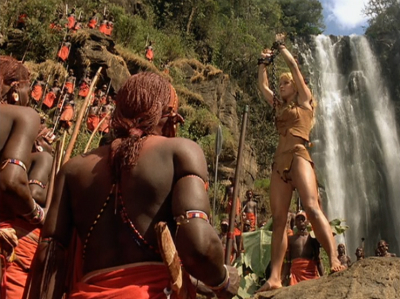
The thing is, Sheena is a female icon with a lot of history behind her. In 1937, she became the first female character to have her own title. She’s had her own movie and TV series. She is self-reliant, clever, righteous and part of a unique community that includes people and animals, and she chooses her home over love. The character of Sheena speaks to women. My solution to Sheena‘s inherent racism is to make the character African and Black like the people of her community. If The Beastmaster, Sheena’s (totally sweet) animal communicating male counterpart, got his own film trilogy (in which Tanya Roberts herself co-stars) and TV show, then Sheena deserves a second shot as a new and improved Black superheroine to be a role model for the next generation of women, particularly women of color.
9. Tank Girl
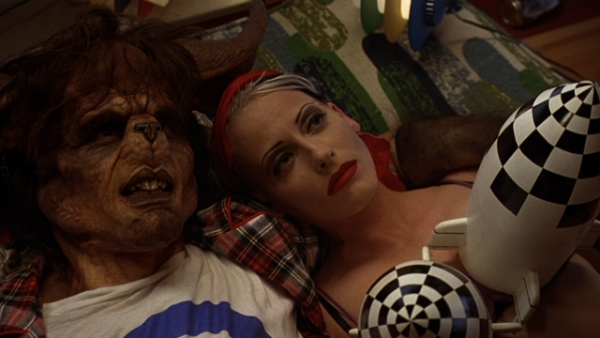
The 1995 film Tank Girl was unsuccessfully translated from its comic origins to the big screen. Despite having a series of celebrity cameos and high profile artists contribute to its soundtrack, the film, like its comic book, was a crazy conglomeration of imagery, absurdist, barely cohesive narrative and haphazard political commentary. Roger Ebert said of the film,
Whatever the faults of Tank Girl, lack of ambition is not one of them…Here is a movie that dives into the bag of filmmaking tricks and chooses all of them. Trying to re-create the multimedia effect of the comic books it’s based on, the film employs live action, animation, montages of still graphics, animatronic makeup, prosthetics, song-and-dance routines, models, fake backdrops, holography, title cards, matte drawings and computerized special effects. All I really missed were 3-D and Smell-O-Vision.
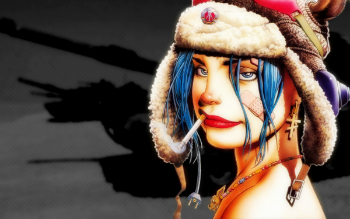
So Tank Girl didn’t make money. It did become a cult classic, and it was directed by a woman (Rachel Talalay), which are both wins in my book. It’s a story that revolves around a woman who doesn’t take shit from anyone. She smokes, she farts, she has tons of sex and just generally does what she wants. The anarchy of the character of Tank Girl and the defiant example she provides for women deserves another chance to show women that we don’t have to meet a feminine mold; we can call the shots and we can be as weird as we want to be…and still save the day in the end.
10. Frozen
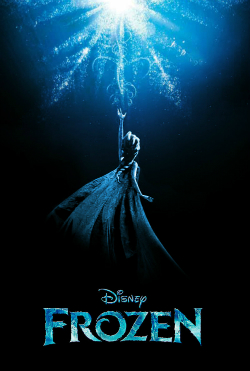
Frozen is the highest grossing animated film of all time and the 5th highest grossing film of all time. Damn. That is some serious popularity. That is some serious proof that people are starving for quality stories about the love and relationships between girls and young women. Loosely based on the Hans Christian Anderson fairy tale The Snow Queen, the Disney film Frozen centers around Elsa and her sister Anna, showing how their love for one another is what truly saves the day.
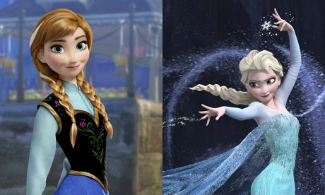
This is the perfect opportunity for Disney to take the reins in their neverending quest for more money and reboot Frozen as a live action movie with all the bells and whistles that a mega-corporation can afford. Such a high profile movie about the beautiful and important bond between young women will help feminism more than I can say. Plus, it’ll be cool to see a live action Elsa use her sweet ice powers.
As I was compiling this list, I realized what a huge influence these superheroines were for me as I was growing up. It’s sad how few of my examples extend into the new century. Though I may have missed a few, it seems more likely that this is because Hollywood hasn’t been making movies about female heroes nearly as often as they should be. With films like Frozen, The Hunger Games, and Divergent, I hope to see a shift in that pattern that neglects the tales of heroines. These movies don’t always get it right, but their very existence is a triumph. Maybe with their success, the lazy producers of movies will dig up some of the films on my list and give them a second, maybe better chance to inspire women of the next generation.
Read also:
Top 10 Superheroines Who Deserve Their Own Movies
Top 10 Superheroes Who Are Better As Superheroines
Top 10 Villainesses Who Deserve Their Own Movies
Bitch Flicks writer and editor Amanda Rodriguez is an environmental activist living in Asheville, North Carolina. She holds a BA from Antioch College in Yellow Springs, Ohio and an MFA in fiction writing from Queens University in Charlotte, NC. She writes all about food and drinking games on her blog Booze and Baking. Fun fact: while living in Kyoto, Japan, her house was attacked by monkeys.
